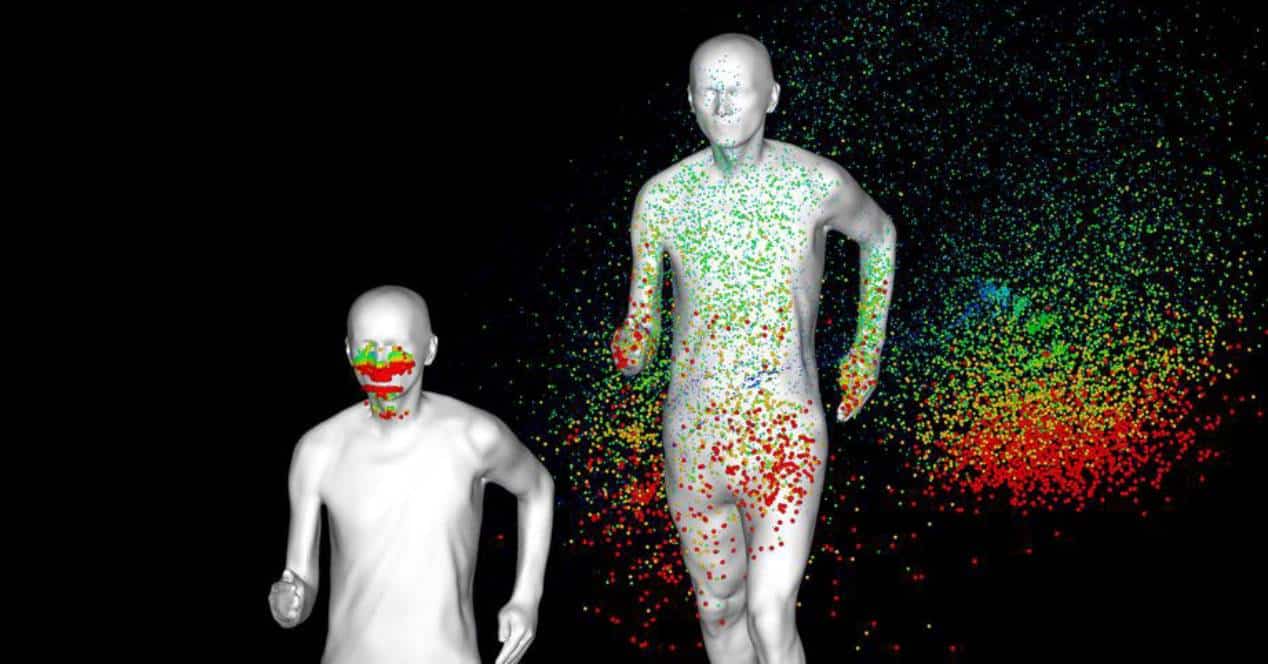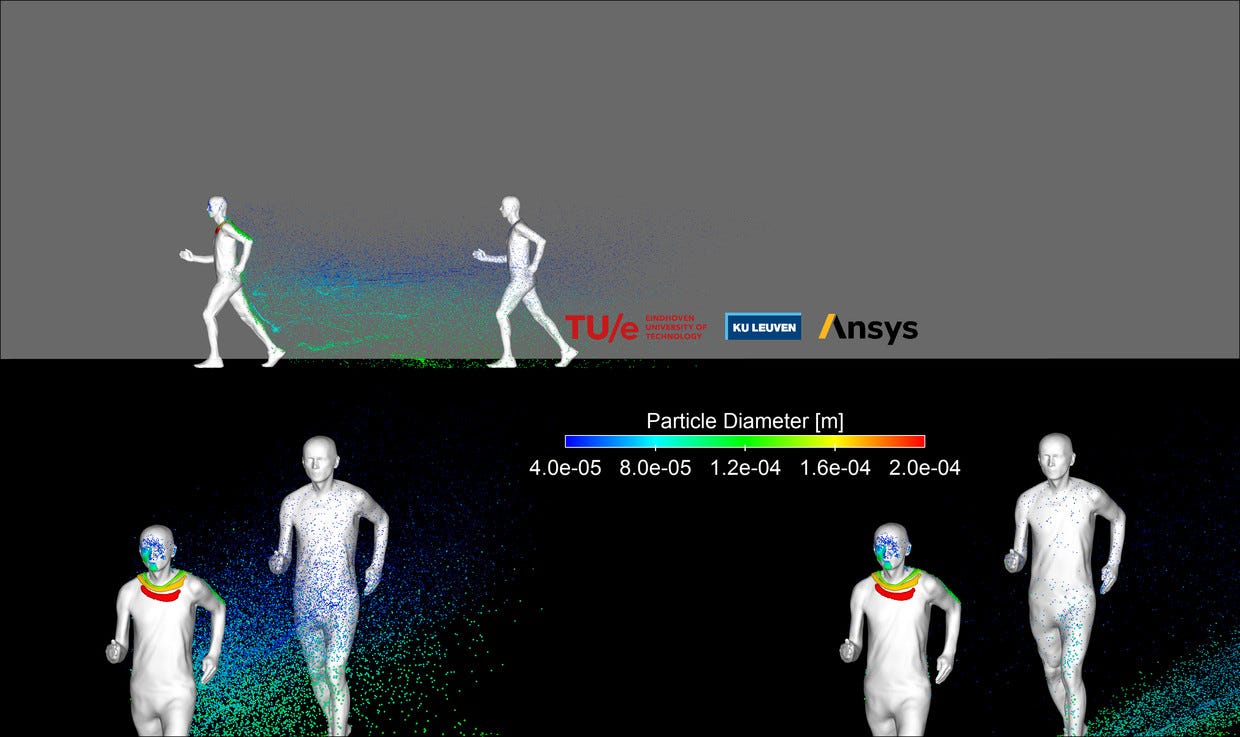
By now, you've likely seen the Belgian-Dutch "study" on how virtual aerodynamics simulations show we need to run and bike much further apart during this coronavirus pandemic.
El article Belgian-Dutch study: Why in times of COVID-19 you can not walk / run / ride a bike near another person?, it is not totally reliable. It is uploaded on a free platform (Medium) that allows anyone to publish and does not require fact checking. Unfortunately, this has been like wildfire on social media, with people focusing on both the title and the conclusion of the article:
“Keep a distance of at least four to five meters behind the lead person while walking, ten meters when running or cycling slowly, and at least twenty meters when cycling fast. "If you want to pass someone, it is also recommended to start 'pre-warning' in a staggered arrangement from a fairly long distance away – twenty meters with bikes, for example, so that you can pass carefully and at a suitable distance by moving in a straight line."
It's very easy to go crazy when you now learn that you need to stay more than ten meters away from a runner and 20 meters from a cyclist in front of you. In some areas, this is not even possible. But take a deep breath, and stay socially distanced. This document is not an investigative study or a study on disease transmission."
To be clear, the coronavirus is extremely serious, and we strongly agree that everyone should run and walk alone, leaving the currently recommended physical distance of 10 meters between you and others and more where possible. But here's why you shouldn't entirely buy this new article.
This is a viral simulation not peer reviewed.
This is essentially a “white paper”, a position paper written by someone with authority on a topic, in this case a team of sports aerodynamic researchers and engineers from Belgium and the Netherlands, but not a peer-reviewed paper.
The reason peer review is so important is that it enforces high standards of the scientific method and ensures that unsubstantiated claims, false conclusions, unacceptable interpretations, or personal opinions are not published without prior peer review. . Think of it like experts double checking the work of other experts.
Still, using the models and animated figures typically used to understand the benefits of drawing (cycling or running) to enhance performance in elite athletes, the researchers used a computational fluid dynamics model (CFD) to simulate the release of saliva particles from people walking or running in different configurations to see how many large and small droplets may be left behind.
They concluded that being too close to someone, even within the currently recommended distance of 10 meters, is risky due to the "cloud of droplets" they leave behind.
The problem is that none of this is validated, including the CFD simulation itself. In the researchers' own words:CFD simulations were performed with Ansys Fluent CFD, building on previous intensive validation studies for the release of gases and particles at different velocities around full-scale mannequins representing human bodies. These validation studies will be reported in the peer-reviewed scientific publication to appear later.«.
In other words, the researchers say they have this concept which they believe to be accurate, but have yet to validate or revise it. Lead researcher Bert Blocken said in a Twitter response that they were quick to share findings because this crisis is an urgent situation around the world where people are dying and economies are collapsing.
Although the intention was good, other experts, including CFD engineers, have delayed using these models for public health purposes, simply because these models are not the right tools for this type of research.
Computer simulations may be fine for showing how much air resistance you can face in a race or group race situation, but may be flawed in terms of microbiology. There are no computers capable of imitating the innumerable variables that occur in biology.
To be fair, Blocken has made it clear that his work is aerodynamic and not virological. In another Twitter response, she said: "The drops evaporate very quickly. The question is what happens to the virus in the solid core: is it still effective in infecting? Some argue yes, I doubt it. Infection rates would be even much higher«.
That is, once the droplets evaporate into the air, Can the virus infect you while remaining as a dry particle in the air? An analysis of more than 75,000 cases of COVID-19 in China has found no such type of airborne transmission.
We understand. These are scary, stressful, and uncertain times when the news changes by the day, if not by the hour. Nobody wants to be arrogant, and we are all looking for answers. But it's important not to hastily take an incomplete piece of evidence and fill in the blanks based on speculation.
In the end, the advice still stands: stay home as much as you can. Wash your hands frequently. Wear a bandana if you are going to be in areas with high traffic. If you feel sick, stay home.
